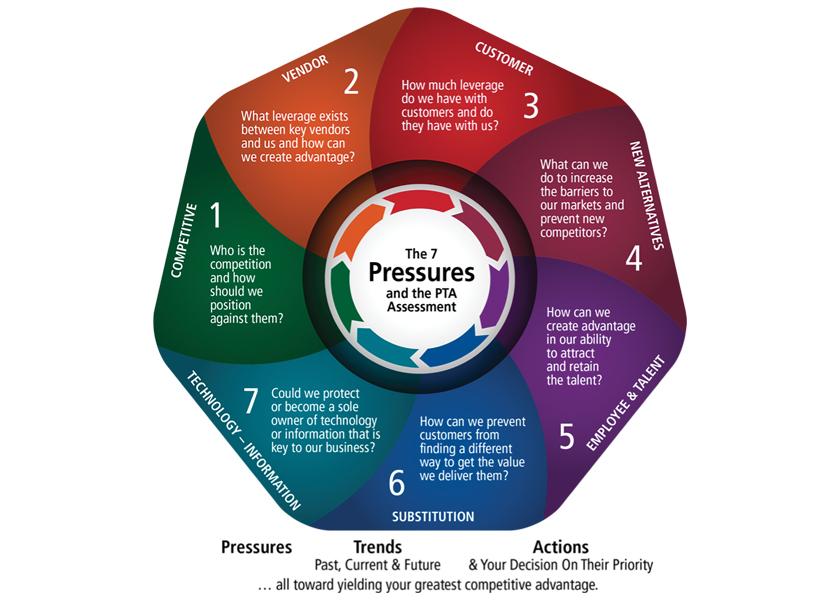Are You Still Using Outdated SWOT Analysis?

In 1979, the tired and inadequate SWOT analysis went out the window when Harvard’s Michael Porter began propagating his Five Forces analysis. I hope you aren’t still identifying strengths, weaknesses, opportunities and threats—parts of a traditional SWOT—as the end-all and be-all of your strategy process. God forbid! Yes, it’s an acronym that’s easy to say and remember, but that ain’t strategy. In fact, it’s hardly a start.
I’ve reformulated Porter’s list and labeled the forces as “pressures.” Along with these pressures that most businesses face, there are trends to consider. Finally, with some modicum of agreement on the pressures and trends, your strategy dialogue team can begin to prioritize potential actions and responses. So, my process is one of assessing pressures, trends and actions. Therefore, it’s the PTA Assessment.
The PTA Assessment Process
This process examines the following:
- Pressures
- Trends: past, current and future
- Actions and your decision on their priority: all to yield your greatest competitive advantage.
Here are seven questions you should ask yourself and those on your strategic dialogue team during a PTA Assessment. When questions ask for a rating, give or ask for a rating ranging from one to 10. With all the other questions, provide an answer as you see fit.
7 Pressures on Business
1 Competitive Pressure
-
How many significant competitors must you consider? What are their capabilities?
-
List and rank competitors in order of concern.
-
List and rate significance of capabilities that are of greatest concern.
-
Do you have relatively equal products and services relative to the competition, or do you have distinct competitive advantages compared with the competition?
-
Consider listing competitive uniquenesses, advantages, equalities and weaknesses as compared to both you and your top competitors.
-
-
How can you present and prove your advantage against your competitors?
2 Vendor/Supplier Pressure
- How unique are key inputs in your products and services?
- How can you partner to exchange mutual advantage?
- How can you leverage your power with suppliers if you can’t partner?
- Which of the approaches—partnering or not—gives the greatest advantage?
3 Customer Pressure
- How easy is it for customers to drive down prices?
- What does it cost a customer to switch to a competitor?
- How can you create greater stickiness with customers?
4 The Pressure & Potential of New Competition or Alternatives
- What is the ability and ease with which new competitors can enter your market?
- Do you have strong or little protection around your key technologies?
- What can you do to increase the barriers to your market?
5 Employee & Talent Pressure
- Are there pressures, demands or expectations from employees, unions or other human resources that currently or could in the future pressure you to a vulnerable point?
- Is there a distinct advantage or constraint in your ability to attract and retain the talent the organization demands?
- Can the talent your organization demands be recruited, or must it be developed?
6 Substitution Pressure
- What is the likelihood and ease with which customers can find a different way to get the value you deliver?
- How likely are you to become the only source?
- What should you do to improve your likelihood of being the preferred provider?
7 Pressure from Change In Resources
- Is technology or information you need changing so dynamically that it could affect business?
- Can you protect or take ownership of technology or information key to the business?
- Is there information or technology that you are developing or could develop that could become a source of strategic advantage?







